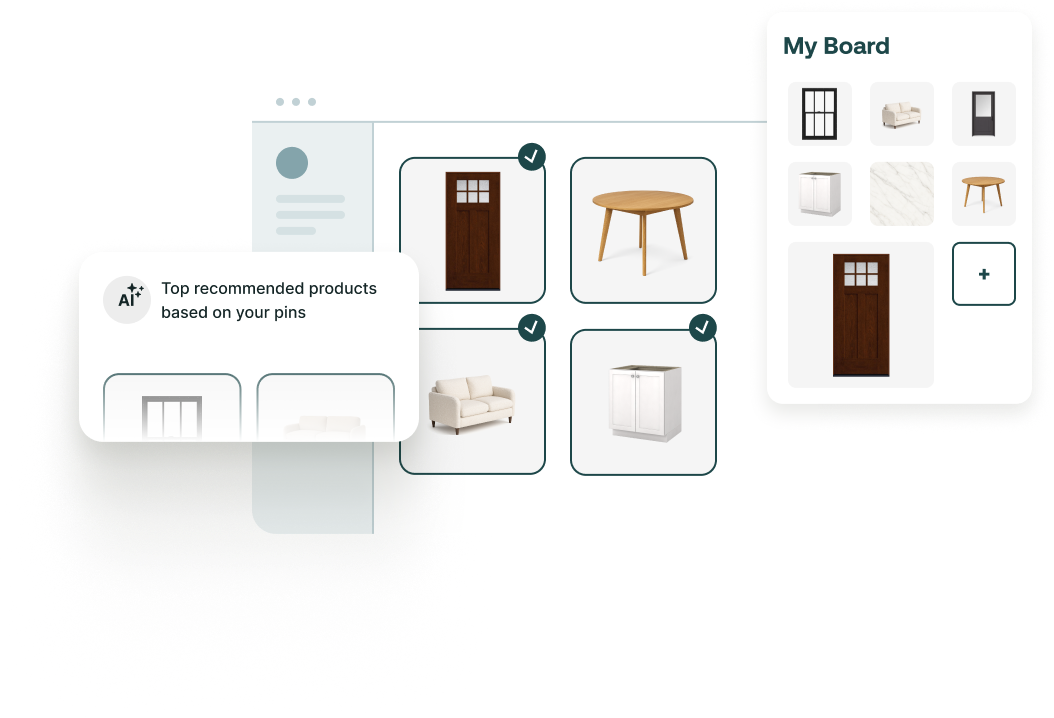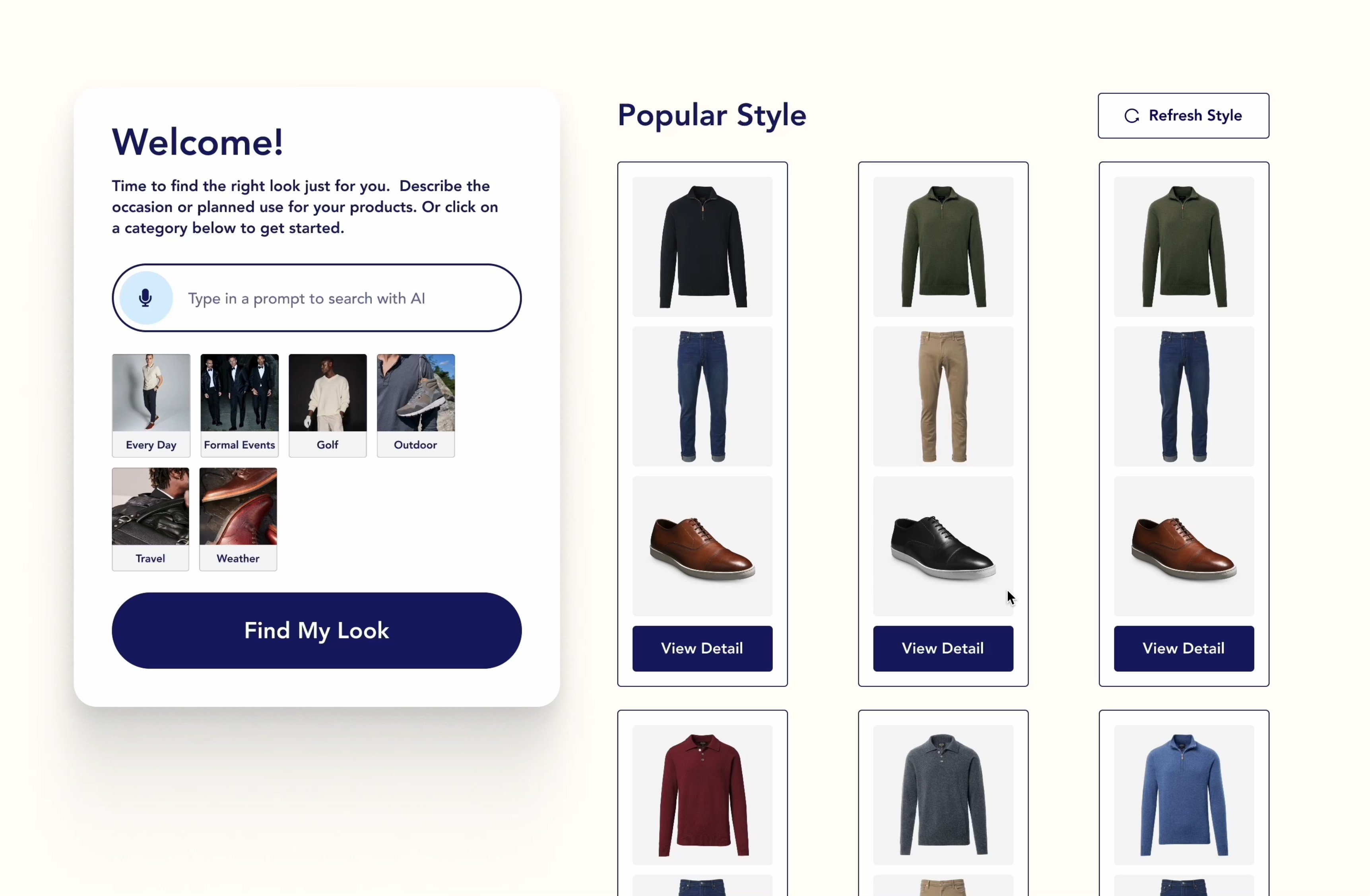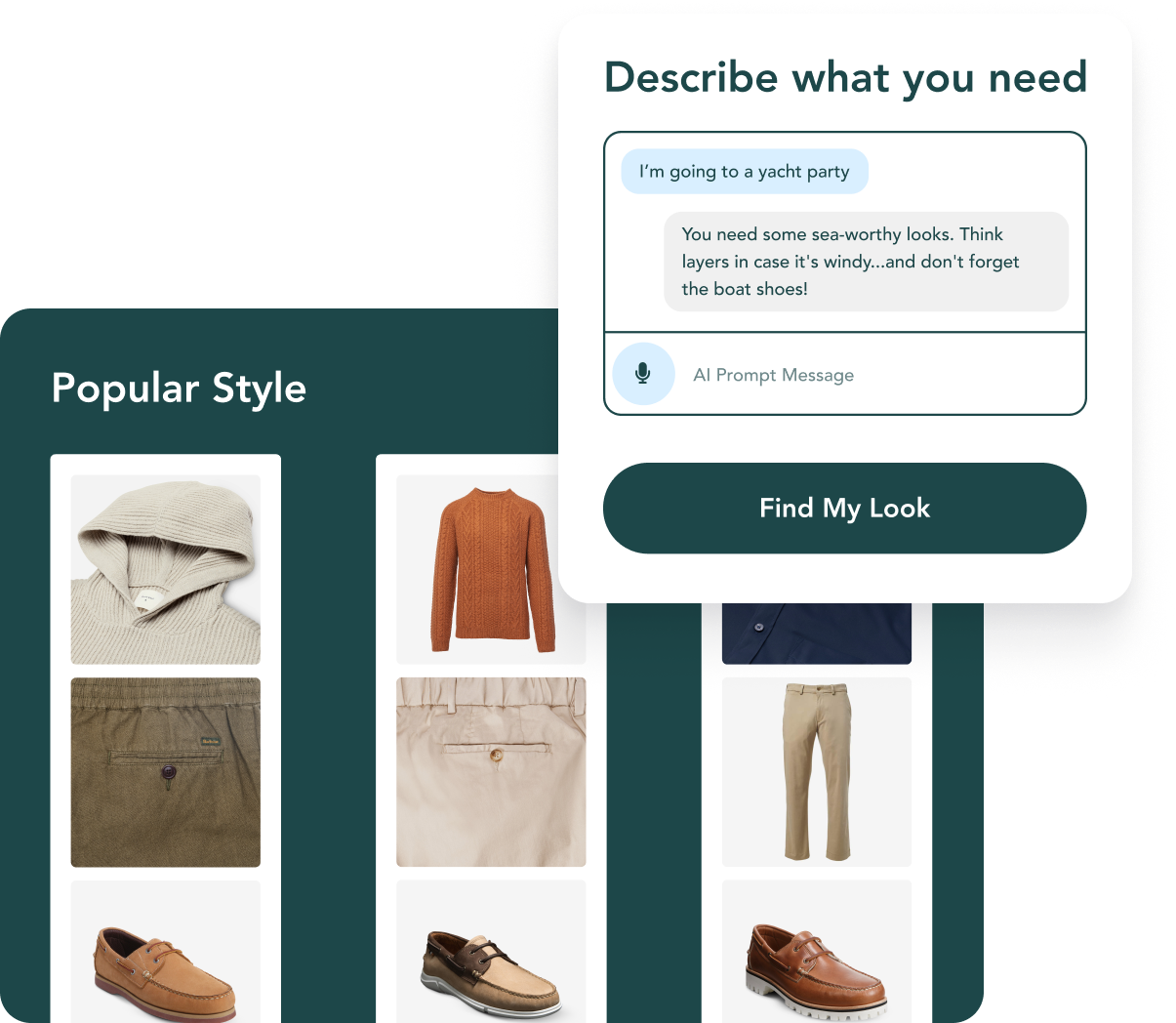How AI Helps Brands Grow Without Increasing Ad Spend
In an era of rising acquisition costs and economic uncertainty, AI enables brands to grow revenue without increasing advertising budgets. By optimizing the value of existing traffic through product recommendations, AI can increase revenue by 300% from the same visitor volume (SellersCommerce). This approach transforms marketing efficiency, improves ROI on existing ad spend, and builds sustainable competitive advantages through superior customer experiences rather than simply buying more traffic.
Every retailer knows the painful truth about customer acquisition costs: they keep climbing. Digital advertising has become increasingly expensive as platforms mature, competition intensifies, and privacy changes reduce targeting effectiveness. For many retailers, the treadmill of constantly buying more traffic just to maintain growth has become financially unsustainable.
But there's another path to growth, one that doesn't require increasing ad spend or constantly chasing new customers. Forward-thinking retailers are using AI to dramatically increase the value they extract from existing traffic. When you can convert more visitors, increase their average order values, reduce their cart abandonment, and keep them coming back for repeat purchases, you can grow substantially without spending more on acquisition.
The numbers tell a compelling story. Gartner forecasts that AI software spending will reach approximately $300 billion by 2027, with 80% of senior marketers planning to boost new technology budgets. This massive investment is happening because the returns are undeniable. Retailers using AI and machine learning technologies saw double-digit sales growth, with annual profit growing by roughly 8%, outperforming retailers who didn't use these solutions.
Let's explore exactly how AI enables growth without increasing ad spend, why this approach is more sustainable than simply buying more traffic, and what it means for retail strategy going forward.
The Ad Spend Trap: Why Traditional Growth Doesn't Scale
Before diving into AI solutions, it's worth understanding why the traditional "just spend more on ads" approach has become problematic. First, customer acquisition costs (CAC) have increased across all digital channels. Competition for attention has intensified, platform algorithms have evolved to capture more advertiser dollars, and privacy restrictions have reduced targeting effectiveness.
Second, this approach doesn't compound. Every month requires fresh ad spend to maintain traffic levels. If you stop spending, traffic immediately drops. You're essentially renting attention rather than building sustainable assets. And as your business grows and you need more traffic to hit growth targets, the absolute dollars required for acquisition increase proportionally, or worse, exponentially if competition in your category increases.
Third, focusing exclusively on acquisition ignores the massive opportunity in conversion optimization. If you're converting 2% of your traffic and spend $100,000 to double your traffic, you've also doubled your conversions, assuming conversion rates remain constant. But what if instead you invested in AI tools that tripled your conversion rate? You'd achieve three times the sales from your existing traffic without any additional ad spend. The math is undeniable: optimizing existing traffic is often more efficient than buying more traffic.
This doesn't mean advertising is bad or unnecessary. Customer acquisition remains essential for growth. But the smartest retailers are rebalancing their approach, investing more in conversion optimization, customer experience, and technologies like AI that increase revenue per visitor. At Threekit, we work with retailers making exactly this shift, and the results speak for themselves.
Maximizing Organic Traffic Value Through AI Discovery
One of AI's most powerful capabilities is helping customers find exactly what they need from your existing catalog. This matters for organic traffic, search visitors, social referrals, direct traffic, and other non-paid channels. These visitors cost nothing to acquire, but many retailers squander this free traffic through poor product discovery experiences.

AI-powered search and recommendation engines transform how customers interact with your catalog. Traditional search requires customers to know what they're looking for and use the right keywords. AI-powered search understands intent, uses natural language, and finds results even when queries are vague or use unconventional terminology. Someone searching for "comfy couch for small apartment" gets results even though "comfy" isn't a technical specification.
The impact on organic traffic value is substantial. When visitors find what they need quickly, engagement increases, bounce rates decrease, and conversions improve. Product recommendations can increase revenue by up to 300%, and these gains apply equally to organic traffic. Every visitor from Google, every social media referral, and every person who bookmarks your site all convert at higher rates when AI helps them discover relevant products.
For retailers with strong SEO programs driving significant organic traffic, AI discovery tools are especially valuable. You've already invested in ranking for keywords and creating content that attracts searchers. Now AI ensures those hard-won visitors actually find products they want to buy. The ROI is exceptional because you're capturing more value from traffic that's already coming to your site for free.
AI also enables better on-site merchandising without manual category management. The system learns which products appeal to different visitor segments and automatically adjusts prominence based on performance. Trending items surface naturally, complementary products appear together, and each visitor sees a personalized version of your catalog optimized for their preferences. This dynamic optimization finds maximum value from every visitor regardless of the traffic source.
At Threekit, we've seen retailers dramatically improve their organic traffic ROI through better product discovery. When someone arrives via search and immediately finds exactly what they need, or discovers something even better they didn't know existed, the likelihood of conversion jumps. You're not paying for that traffic, but you're capturing far more value from it through AI-powered discovery.
Converting More Visitors Through Intelligent Guidance
Even the best product discovery can't overcome purchase hesitation for high-consideration items. This is where AI-guided selling becomes important for growing revenue without increasing ad spend. By helping customers navigate, build confidence, and make informed decisions, guided selling converts visitors who would otherwise leave without purchasing.
Think about what this means economically. If you're currently driving 100,000 visitors monthly with a 2% conversion rate, that's 2,000 customers. To get 6,000 customers through acquisition, you'd need to triple your traffic to 300,000 visitors, a massive increase in ad spend. But if AI-guided selling triples your conversion rate to 6%, you get those same 6,000 customers from your existing 100,000 visitors. Same customer volume, zero additional acquisition cost.
The mechanism here is straightforward: guided selling reduces the barriers between interest and purchase. For complex products, customers often abandon because they're unsure which option fits their needs, overwhelmed by choices, or lacking confidence in their selection. AI-guided selling addresses all these issues through intelligent questioning, personalized recommendations, and expert advice delivered at scale.
This is particularly valuable for higher-value products where purchase hesitation is common. Someone buying a $2,000 piece of furniture or a $1,500 laptop experiences significant doubt. "Is this really right for me?" "Should I keep shopping?" "What if I'm making a mistake?" AI-guided selling builds confidence through the process, validating choices and reducing uncertainty. The result is more completed purchases from the same traffic, which means more revenue without additional acquisition costs.
Companies using highly personalized interactions outperform others by 30% in conversion and revenue (Shopify). This personalization, delivered through AI-guided selling, doesn't require more traffic; it simply converts existing traffic more effectively. At Threekit, we design guided selling experiences specifically to build purchase confidence and reduce friction, enabling retailers to grow by serving their existing audiences better.
Reducing Cart Abandonment: Recapturing Nearly-Lost Revenue
Cart abandonment represents one of the largest growth opportunities for retailers, and it's purely about optimizing existing traffic rather than acquiring new visitors. According to the Baymard Institute, the average cart abandonment rate sits at 70.22% (seven out of every ten customers who add items to their cart leave without purchasing). The projected yearly value of abandoned merchandise is around $4 trillion globally (SellersCommerce).
Think about those numbers for a moment. These aren't cold prospects or casual browsers. They're high-intent customers who have already selected products and added them to their cart. They're 90% of the way to being customers. Recovering even a fraction of these abandonments would dwarf the impact of most acquisition campaigns.
AI attacks cart abandonment from multiple angles. First, it reduces abandonment through confidence-building during the shopping journey. When customers receive intelligent guidance, accurate product visualization, and personalized recommendations, they're less likely to abandon at checkout because they're more confident in their purchase decisions.
Second, AI-powered systems can intervene at the moment of abandonment. When the system detects hesitation, such as a prolonged time on the cart page or cursor movement toward exit, it can proactively offer assistance through chatbots or targeted messaging. Not in an annoying way, but instead in a helpful way: "Do you have questions about shipping?" "Would you like help completing your order?" "Here's a limited-time discount to make the decision easier."
Third, AI optimizes post-abandonment recovery campaigns. More importantly, AI can personalize these messages based on abandonment reason, cart value, customer history, and product category, significantly improving recovery rates compared to generic abandoned cart emails.
The financial impact of reducing abandonment is substantial. Baymard Institute’s research suggests that improving checkout flow and design could recover lost orders worth $260 billion. Obviously, not all of that is achievable, but even recovering 5-10% of your abandoned carts represents massive revenue growth from traffic you've already paid to acquire.
From a growth-without-ads perspective, cart abandonment recovery is a smart approach. These are customers who have already visited your site, engaged with products, and expressed purchase intent. You've already paid the acquisition cost. Recovering their purchases is incremental revenue that requires no additional ad spend, just better technology and processes to reduce abandonment and recover abandoned carts.
Increasing Order Values From Existing Customers
While converting more visitors is valuable, increasing how much each customer spends is equally important for growth without additional ad spend. AI excels at intelligently increasing average order value (AOV) through personalized upselling, strategic cross-selling, and bundling recommendations.
Product recommendations can increase average order value by 50%, and brands utilizing first-party data in key marketing functions achieved a 2.9-times increase in revenue lift (Digital Marketing Institute). These improvements apply to all traffic sources, including paid, organic, direct, and referral. Every customer who visits your site has the potential to spend more when AI provides relevant suggestions and guidance.
The economic logic is compelling. If your average order value is $100 and AI tools increase it to $150, you're generating 50% more revenue from the same number of customers. To achieve that same revenue growth through acquisition alone, you'd need to increase traffic and conversions by 50%, a significant marketing investment. But AOV improvement requires no additional visitors, just better conversion of the visitors you already have.
At Threekit, we've seen how product configuration and visualization tools naturally drive higher order values. When customers can customize products to their exact preferences, they often select premium materials, add features, and include accessories. The interactive experience creates engagement and investment in the purchase, making customers more willing to invest in higher-value orders.

AI-powered bundling is particularly effective for AOV growth. By analyzing purchase patterns and product compatibility, AI creates personalized bundle recommendations that genuinely provide value to customers while increasing transaction sizes. A customer who came to buy one item discovers a curated bundle of complementary products at an attractive package price and ends up spending significantly more without any additional acquisition cost to the retailer.
This approach also improves customer lifetime value, which is the best metric for sustainable growth. Customers who have positive experiences with AI-guided discovery and personalization return for repeat purchases. They don't need to be re-acquired; they come back organically.
Reducing Returns: Protecting Revenue You've Already Earned
Returns are a hidden drain on retail profitability, and they're particularly damaging to growth metrics. According to the National Retail Federation, the average return rate for eCommerce was 16.9% in 2024, with total returns projected to reach $890 billion. Every return represents revenue that appeared on your books but ultimately disappeared, along with the costs of reverse logistics, restocking, and often the inability to resell items at full price.
AI reduces return rates by improving product-customer matching and setting accurate expectations. When customers receive intelligent guidance about which products actually fit their needs, they're far less likely to be disappointed upon delivery.
From a growth perspective, reducing returns is economically equivalent to increasing sales, but easier and more profitable. If you're generating $10 million in revenue with a 20% return rate, you're keeping $8 million and losing $2 million to returns (plus all the associated costs). Reducing your return rate to 10% through better AI-powered product matching means you keep an additional $1 million without acquiring a single additional customer or spending a dollar more on advertising.
The impact compounds when you consider that reducing returns improves customer satisfaction, which drives repeat purchases and positive word-of-mouth. A customer who receives exactly what they expected becomes a loyal advocate who generates future revenue organically. Meanwhile, customers who must return items often don't repurchase and may abandon your brand entirely.
For categories with particularly high return rates, AI-powered solutions offer strong benefits. Virtual try-on tools, AI-powered fit recommendations, and better product visualization help customers order the right size and style the first time. This protects revenue and improves the customer experience, creating a cycle of satisfaction and loyalty.
At Threekit, we've developed visualization technologies that help reduce returns by letting customers see what they're purchasing. When someone can view a configured product from every angle, place furniture virtually in their room, or see apparel in different colors and styles, their expectations align with reality. The "it didn't look like I expected" returns happen less often.
Building Sustainable Competitive Advantages Through Experience
Beyond immediate metrics like conversion rates and AOV, AI creates sustainable competitive advantages that create long-term growth without increases in acquisition spending. When you build better customer experiences through AI, customers choose you over competitors even when your acquisition spending is lower.
Retailers who invest in sophisticated, well-integrated AI capabilities create experiences competitors can't easily replicate. This differentiation doesn't require outspending competitors on advertising. It requires outperforming them in experience.
Consider a customer comparing two retailers. Both sell similar products at similar prices. One has basic product pages and a manual search. The other has AI-powered discovery that surfaces perfect recommendations, guided selling that helps with complicated choices, and visualization tools that build purchase confidence. Which retailer will the customer choose? More importantly, which retailer will the customer return to for future purchases?
This experience advantage compounds over time. Satisfied customers become repeat customers who require minimal acquisition cost. They generate word-of-mouth referrals that bring in new customers organically. They're less price-sensitive because they value the superior experience. And they have higher lifetime values because they purchase more frequently and with higher order values.
The National Retail Federation reports taht 76% of consumers consider free returns a key factor in deciding where to shop, and 67% say a negative return experience would discourage them from buying again. But return policies alone aren't enough. Retailers need AI capabilities that reduce the need for returns in the first place by helping customers make better initial decisions.
Similarly, checkout experience matters immensely. With an average cart abandonment rate of 70%, even small improvements in checkout flow and confidence-building can recover massive amounts of revenue. AI-powered reassurance, intelligent assistance, and frictionless processes create competitive advantages that drive customers to complete purchases with you rather than your competitors.
At Threekit, we help retailers build these sustainable competitive advantages through best-in-class visualization and guided selling tools. When your product exploration experience is demonstrably superior to competitors, you don't need to outspend them on ads. Customers naturally gravitate toward the better experience.
The ROI Math: AI vs. Additional Ad Spend
Let's make the economics concrete with a simplified example. Imagine a mid-sized retailer with the following metrics:
- 100,000 monthly visitors
- 2% conversion rate (2,000 customers)
- $150 average order value
- 20% return rate
- Monthly revenue: $240,000 ($300,000 gross, minus $60,000 in returns)
To grow revenue by 50% to $360,000 monthly through increased acquisition alone would require increasing traffic by 50% to 150,000 visitors (assuming conversion rates remain constant). If customer acquisition costs average $50, that's an additional $2.5 million in annual ad spend.
Now consider the AI approach to reaching that same $360,000 monthly revenue:
- Increase conversion rate from 2% to 4% through AI-guided selling and discovery: adds $240,000 monthly
- Increase AOV from $150 to $180 through intelligent upselling and cross-selling: adds $60,000 monthly
- Reduce cart abandonment by 20% through confidence-building: recovers $48,000 monthly
- Reduce return rate from 20% to 12% through better product matching: saves $24,000 monthly
These improvements compound. Better conversion rates apply to higher order values. Reduced abandonment preserves those higher-value orders. Lower return rates protect more revenue. The total impact easily exceeds 50% revenue growth, achieved through optimizing existing traffic rather than buying more of it.
The investment required? AI implementation and optimization might cost $100,000-300,000, depending on sophistication, a fraction of the $2.5 million in additional ad spend required for equivalent growth through acquisition. The ROI is obvious, and it gets better over time as AI systems learn and improve.
Real-World Results: Retailers Growing Without Increased Ad Spend
The theoretical benefits are compelling, but what about actual results? Retailers across categories are proving this approach works in practice. A sportswear retailer using AI-powered tools achieved a 297% conversion increase, 27% AOV rise, and 28% fewer returns, all metrics that directly translate to revenue growth without additional traffic acquisition costs (BoldMetrics).
An ethical activewear brand saw a 332% conversion lift and 35% higher AOV through AI implementation. Another company using personalized omnichannel messaging and AI-powered automation achieved a 49x ROI and 700% increase in customer acquisition through organic channels, meaning they grew customer acquisition without proportionally increasing paid acquisition spending (Insider).
According to NVIDIA, 69% of retailers leveraging AI agents report significant revenue growth due to personalized shopping experiences. This growth doesn't require increasing ad budgets. It comes from converting more visitors, selling them more per transaction, reducing abandonment, and keeping them as satisfied customers who return organically.
AI enables revenue growth that significantly outpaces traffic growth. In fact, many successful retailers are maintaining or even reducing acquisition spending while growing revenue, improving their cost of customer acquisition ratios dramatically, and creating much healthier unit economics.
Strategic Implications: Rebalancing Growth Investments
This doesn't mean retailers should abandon customer acquisition. New customers remain essential for growth, and paid advertising plays an important role in reaching them, but the strategic implication is clear: many retailers are over-invested in acquisition and under-invested in conversion optimization and customer experience.
The optimal approach is balanced. Continue acquiring customers through paid channels where ROI is positive, but shift some investment toward AI capabilities that maximize the value of all traffic, including paid, organic, direct, and referral. This rebalancing improves overall marketing efficiency and creates more sustainable growth trajectories.
Consider two retailers with identical $1 million marketing budgets. Retailer A spends $900,000 on acquisition and $100,000 on experience optimization. Retailer B spends $600,000 on acquisition and $400,000 on AI-powered conversion optimization. Retailer A gets 30% more traffic but converts it at standard rates. Retailer B gets less traffic but converts it at 2-3x standard rates with higher AOV and lower returns. Who generates more revenue and profit?
The math usually favors the balanced approach. Retailer B likely generates comparable or superior revenue with better unit economics and more sustainable competitive positioning. The customers they do acquire become more valuable, their organic traffic converts better, and they build experience advantages that reduce dependency on paid acquisition over time.
According to Adobe, 65% of executives cite AI and predictive analytics as key growth levers, and CFOs are demanding new ROI-tracking methods as AI spending increases. This scrutiny is healthy. It forces retailers to measure AI impact precisely and optimize accordingly. But when measured properly, AI consistently delivers superior ROI compared to incremental acquisition spending, particularly in mature, competitive categories where acquisition costs have risen substantially.
At Threekit, we work with retailers making exactly this strategic shift. They're not abandoning acquisition, but they're rebalancing toward capabilities that multiply the value of every visitor regardless of source. The result is more efficient growth, better customer experiences, and stronger competitive positioning.
Implementation: Getting Started With Growth-Focused AI
For retailers ready to pursue growth without increasing ad spend, several practical steps enable success. First, audit your current conversion funnel to identify the biggest opportunities. Where do visitors drop off? Which product categories have high abandonment? What's your current return rate, and which categories drive it the highest? These pain points indicate where AI can deliver the most immediate impact.
Second, start with high-impact, quick-win implementations. AI-powered product recommendations can be deployed relatively quickly and deliver immediate revenue improvements. Similarly, cart abandonment tools and intelligent search functionality provide fast ROI. Build from these foundations toward more sophisticated capabilities like guided selling and product visualization.
Third, ensure data infrastructure supports AI capabilities. Clean, comprehensive product data is essential. Customer behavior tracking, purchase history, and preference data enable personalization. The better your data foundation, the more effective your AI systems become. Many retailers discover that improving data quality alone unlocks substantial value.
Fourth, measure obsessively and optimize continuously. Track conversion rates, AOV, cart abandonment, return rates, and customer lifetime value. Attribute improvements accurately to AI implementations. Use these insights to refine and expand capabilities. AI systems improve over time through machine learning, so commit to ongoing optimization rather than the set-it-and-forget-it approach.
Fifth, integrate AI capabilities across the customer journey rather than using them in isolation. Discovery, guided selling, visualization, and personalization should work together. At Threekit, we design integrated experiences where each capability enhances the others, creating compounding benefits that isolated implementations can't achieve.
The technology has matured to the point where implementation doesn't require massive custom development. Solutions integrate with existing eCommerce platforms, and tools are available even for mid-sized retailers. The barrier to entry has dropped substantially, making these capabilities accessible to retailers who couldn't have afforded them just a few years ago.
The Changing Landscape: Why This Approach Matters More Than Ever
Several trends make the "grow without increasing ad spend" approach increasingly important. First, privacy changes and cookie restrictions have reduced the effectiveness of paid advertising, particularly in terms of targeting and retargeting. Third-party data is disappearing, making first-party customer insights, the foundation of AI personalization, more valuable than ever.
Second, acquisition costs continue rising across most categories. Competition for digital attention intensifies, platform costs increase, and efficiency generally declines. The ROI on incremental ad spending has decreased for many retailers, making conversion optimization more attractive by comparison.
Third, customer expectations have risen dramatically. Retailers who fail to invest in these capabilities put themselves at a competitive disadvantage, unable to meet customer expectations despite significant acquisition spending.
Fourth, economic uncertainty makes efficiency paramount. 80% of senior marketers plan to boost technology budgets, but this investment reflects a shift toward capabilities that improve efficiency rather than simply buying more traffic (Adobe). In tough economic conditions, growing through optimization rather than acquisition becomes essential.
Adobe reported a 1,950% year-over-year increase in retail site traffic from chat interactions during 2024's Cyber Monday, indicating massive consumer adoption of AI-powered shopping experiences. This isn't emerging behavior. It's mainstream. Customers want these intelligent, personalized experiences, and they'll gravitate toward retailers who provide them.
The retailers thriving in this environment are those who view AI not as a cost center but as a revenue multiplier. They're investing in capabilities that increase the value of every visitor, every customer interaction, and every transaction. And they're achieving growth that would be prohibitively expensive to reach through acquisition alone.
Looking Forward: The Future of Efficient Growth
AI capabilities will become more sophisticated, more accessible, and more essential for competitive success. The retailers who thrive will be those who master extracting maximum value from their traffic rather than simply buying more traffic.
This doesn't mean the end of customer acquisition, far from it. But it does mean a fundamental rebalancing where experience, conversion, and retention receive investment proportional to their impact on sustainable growth. The best retailers will excel at both acquisition and conversion, but they'll recognize that optimization often delivers superior ROI compared to incremental acquisition spending.
We're entering an era where competitive advantage comes less from advertising budgets and more from experience quality. The retailer with the best AI-powered discovery, the most helpful guided selling, the most confidence-building visualization, and the most personalized recommendations will win customers even against competitors who outspend them on ads. Experience quality becomes the differentiator, and AI enables that quality at scale.
At Threekit, we're committed to helping retailers build these capabilities. We believe the future belongs to retailers who create experiences so valuable that customers seek them out, return repeatedly, and recommend them to others. Growth through genuine value creation rather than simply buying attention.
The opportunity is substantial and immediate. Your existing traffic, organic, direct, referral, and yes, paid, contains enormous untapped value. AI enables you to capture that value through better conversion, higher order values, reduced abandonment, lower returns, and increased customer lifetime value. These improvements compound into revenue growth that doesn't require proportional increases in acquisition spending.
The question isn't whether this approach works. The data proves it does. The question is how quickly you can implement it to capture the growth opportunities that exist within your current traffic. Because while you're considering it, your competitors may already be doing it, converting your potential customers with superior experiences that AI makes possible.
The path to efficient, sustainable growth doesn't require buying more traffic. It requires serving your existing traffic better. AI makes that possible at scale, turning every visitor into a higher-value opportunity and every customer into a longer-term relationship. That's how you grow without increasing ad spend, not by finding more customers, but by creating more value for the customers you already have.
Sources:
- Gartner - AI Software Spending Forecast: Referenced in Bold Metrics article (https://blog.boldmetrics.com/strategic-ai-investments-in-retail-2025-balancing-innovation-and-roi)
- Adobe - 2024 Digital Trends Report: Referenced in Bold Metrics article
- IHL Group via Statista - AI and ML Impact on Retail Performance: https://www.statista.com/statistics/1453198/ai-and-ml-impact-on-retail-performance/
- SellersCommerce - AI In ECommerce Statistics: https://www.sellerscommerce.com/blog/ai-in-ecommerce-statistics/
- Bold Metrics - Strategic AI Investments in Retail 2025: https://blog.boldmetrics.com/strategic-ai-investments-in-retail-2025-balancing-innovation-and-roi
- Insider (Agent One) - AI in Retail 2025 Trends: https://useinsider.com/ai-retail-trends/
- Baymard Institute - Cart Abandonment Rate Statistics: https://baymard.com/lists/cart-abandonment-rate
- National Retail Federation - 2024 Retail Returns Report: https://nrf.com/media-center/press-releases/nrf-and-happy-returns-report-2024-retail-returns-total-890-billion
- Shopify - Ecommerce Returns Guide: https://www.shopify.com/enterprise/blog/ecommerce-returns
- All About AI - AI Agents Statistics: https://www.allaboutai.com/ai-agents/statistics/
- McKinsey - The State of AI Report: https://www.mckinsey.com/capabilities/quantumblack/our-insights/the-state-of-ai
- Digital Marketing Institute - First Party Data - https://digitalmarketinginstitute.com/blog/why-first-party-data-is-more-important-than-ever-and-how-to-use-it
- NVIDIA - State of AI in Retail and CPG: 2024 Trends - https://images.nvidia.com/aem-dam/Solutions/documents/retail-state-of-ai-report.pdf


